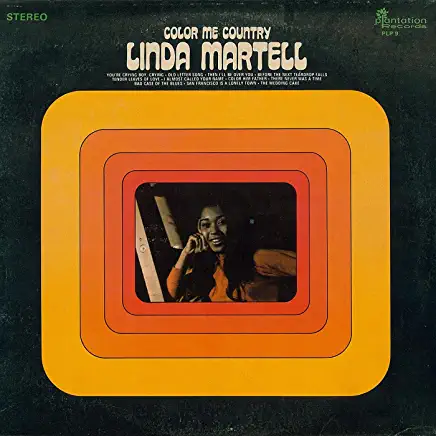
I was only 5 when Linda Martell’s album Color Me Country was released, but Apply Music recently brought it to my attention. Recorded over the course of 12 hours, one wishes more of the raw energy that must have been present to sustain such a long recording session had been captured on the record. Nonetheless, it is a nearly flawless Country album.
It reached #40 on the Billboard Country Music charts, and three of the singles also charted, one reaching as high as #22. Apparently that wasn’t good enough for Shelby Singleton, with whom she had signed a recording contract, because she never recorded another album. It seems he saw her as a novelty act, releasing the record on, I kid you not, his “Plantation Records” label! He never had her record another album.
However, she did continue singing live. She the first Black woman to play the Grand Ole Opry where she received 3 standing ovations and was invited back about a dozen times. The clip below is from one of her rare television appearances, this one on the Hee Haw show in 1970.
Martell’s granddaughter is working on a documentary about her grandmother, and has launched a campaign on GoFundMe to raise the money to make it happen. I plan to donate as soon as I finish this post. This is a story that needs to be told.
Clearly it was racism in the recording industry that cut Martell’s career short. In the 1920s recording labels and radio began promoting music from the South as either “Hillbilly Music” or “Race Music.” This was not a distinction made by the artists. In fact, often the same songs, especially traditional folk or religious songs, would succeed in both genres, just not by the same artists! The names quickly feel by the wayside, but the division remained under different labels.
Fun fact: The first album recorded by Tina Turner was Tina Turns the Country On! It has never been released.
https://en.wikipedia.org/wiki/Tina_Turns_the_Country_On!
But I digress. Things have changed since then. Charley Pride is no longer the ONLY name that comes to mind when one is asked to name a Black Country star. There’s Rissi Palmer, Darius Rucker, Rhiannon Giddens, Jimmie Allen, Kane Brown, Miko Marks, and others. Though CMT presented Linda Martell the “Equal Play Award” in 20212, the Country Music industry just wasn’t ready for her in 1970. Consequently, her recording career was cut short. I hope that more recordings will be discovered in the making of the documentary and her granddaughter will also release a soundtrack album!
Donate to support the documentary here!

